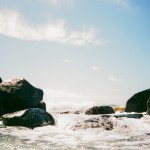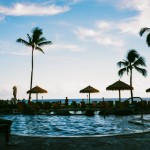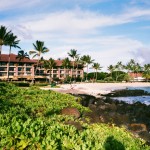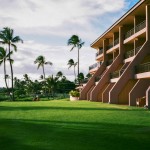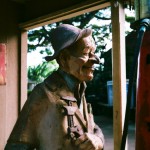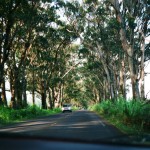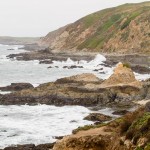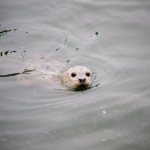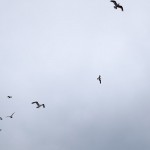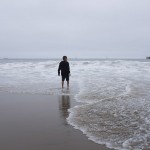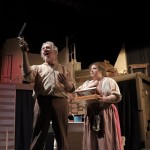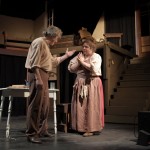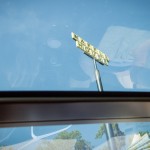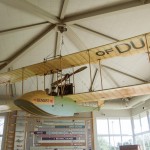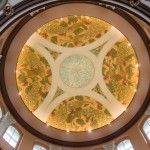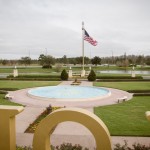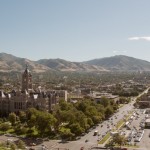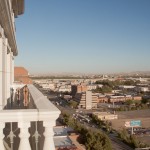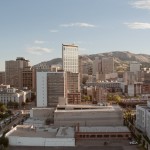After owning the original Fujifilm X100 in 2012 for about 4 months, I decided that its “quirks” (read: the things that sucked about it–that’s right, I said it) were things that I decided I couldn’t live with. We took it on a family trip to Oregon, and the resulting photos from that trip are spectacular and live in a printed and bound book. But for me, the resulting images are only half of the equation. The experience of shooting, and how a camera makes me feel–the way it performs, the way it feels in hand, and the way it becomes an extension of my hand and eye is a huge part of what draws me to photography. I found that with the X100, not always, but often enough, I noticed the camera–the same way you notice something on the ground and step over or around it so you don’t trip. Then, 8 feet later, there’s another thing on the ground you have to step over so you don’t trip. Then, 6 feet later…you get the picture. It was getting in my way.
My main issues with it were these:
- Slow, inaccurate focus that hunts, and can’t focus closely, unless you’re in Macro mode, in which case it works even slower.
- Manual focus that is simply unusable.
- Electronic viewfinder does this “stutter” thing right as the camera acquires focus from a half-press of the shutter button. About half a second of lag is the best way I can describe it, and with moving subjects, the resulting photo is not what I intended to compose. It was enough to drive me nuts.
I wanted to love the X100, but I didn’t. I liked it very much, but I didn’t love it. With a now-2-year-old child, speed is very much a concern when it comes to cameras, so i decided to move back to the Micro Four Thirds system with an Olympus PEN E-P3…until I saw the X100S
So let’s move on . The Fujifilm X100S. I bought one. I love it, and there’s nothing (as of this writing) I would change about it. Here’s why:
Virtually every issue I had with the X100 was addressed and fixed or improved. Autofocus is faster. Not as fast as advertised with the .000004 nanosecond autofocus that is claimed (yes, I’m exaggerating), but it is faster. Fast enough, and I’m willing to bet that it will get even faster with future firmware updates. Manual focus? Not only is it usable–it kicks ass. Focus peaking allows me to manually focus faster than any film rangefinder I’ve ever owned. The laggy-EVF-when-half-pressing-the-shutter issue is still present–but much better, and it isn’t bad enough to bother me. In respect to speed, everything about the camera is faster, and I feel that the X100s is the camera that the X100 should have been.
There is one feature, though, that is above and beyond the “should-have-been-on-the-X100” category: The sensor. The sensor makes beautiful pictures. Not since I bought my very first DSLR in 2004 did I pixel peep a file and say “wow, that is beautiful.” Great highlight retention, excellent shadow detail, and razor sharp. It is worth mentioning that I’ve only owned the X100S for four days, but I did have a chance to put it through the most demanding and difficult of situations that I personally shoot in: a live theatrical production dress rehearsal. Fast shoot, lots of movement, and fast turnaround. Normally I would shoot RAW and do a 24-hour (or less) turnaround of the selects to deliver to a theater company, but in this case, I decided to break one of my longstanding rules with my theatrical photography: Shooting in JPG…with no post production. Just an edit of the selects in Photo Mechanic and up they went on my website. Normally I would shoot in RAW only, and adjust the files to my liking in Lightroom. I felt like I was taking a huge risk, so naturally I shot in RAW + JPG so I could have the RAW file for later use and for archival purposes. But what I delivered to the client were JPGs, right out of camera. I couldn’t be happier, and in one night, I have changed the way I look at my shoot/post workflow for theatrical shoots.
Another spot where the X100S shined is in its consistent and reliable metering–even in a situation that wreaks havoc on a camera’s meter: a stage with brightly spot-lit subjects and backgrounds that often fall to black. With DSLRs, I shoot manual, and spot meter to nail exposure. With the X100S, I shot in aperture priority using Matrix metering (I think Fuji actually calls it “Multi”) and I found myself dailing all the way down to -2 stops to hold highlights, keep shadow detail, and keep the midtones on the actors right where they needed to be. The Fuji nailed it every time.
I did make some adjustments to how the camera handled the JPGs:
- Pro Neg Standard
- Color -1
- Sharpness -1
- Highlight Tone -1
- Shadow Tone -1
- Noise Reduction -2
This resulted in the camera getting really close to how I would process a RAW file in Lightroom. Default JPGs in most digital cameras are always too saturated, contrasty, and over-sharpened to my eyes, and I find that noise reduction just sacrifices details to produce a less-noisy file. I really don’t care about noise. Remember the grain in that stuff we used to shoot with? What was it called? Oh yeah, film. OMG, this grain is ruining my pictures! Not once have I had a client complain about a picture having too much chroma noise. Not that it mattered for this last production–the files were clean as a whistle.
Speaking of Lightroom, I haven’t had time to play with RAW files with the 4.4 update, but I’m so much less concerned about it now after seeing the JPG output from the X100S.
Yet another big plus: The X100S is unbelievably silent. I don’t have a scientific comparison but I do believe its even quieter than the X100. I have all the sounds, beeps, and fake shutter clicks turned off. A huge plus when you want to avoid distracting actors.
In all, the camera is everything I want. It’s fast, small, light, and I wouldn’t mind carrying it around all day. The pictures are great, low light performance is the best from any camera I’ve ever owned, and just as importantly, the shooting experience itself is one where the camera absolutely just becomes part of you.
Notes on the theatrical shoot: Sweeney Todd, presented by Bay Area Stage. I shot with both a 7D + 24-70mm f2.8, and the X100S. The whole gallery featuring pictures from both cameras (and a few from my super-compact Canon S110) can be seen here.
Buy the X100S from Amazon.
